One Giant Lie for Mankind by Meredith Hite
Imagine celebrating the fifty-year anniversary of an event that never happened. Fifty years ago, Americans Neil Armstrong and Buzz Aldrin were the first people to step foot on the moon...or were they? Many people, about 6%-20% of Americans, believe this “first” moon landing never happened (Jennings 1). There are a couple of detailed theories that help form the overall theory that the moon landing was faked (Little 1). These theories include that the moon landing was fake because the American flag was waving in the wind, the stars cannot be seen, the shadows did not make sense (1).
According to the conspiracy theory, many people were involved in faking the moon landing. One essential person related to the theory was Buzz Aldrin, who was one of the first men on the moon. He exhibited ambition in his early life, military service, and astronaut career.
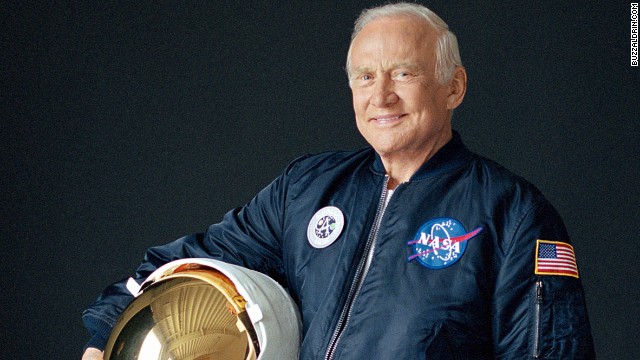
Even in Buzz Aldrin’s early life, he demonstrated ambition (Aldrin 1). On January 20, 1930, he was born in Montclair, New Jersey (1). He was born Edwin Eugene Aldrin Jr. to Edwin Eugene Aldrin and Marion Moon (1). The nickname “Buzz” originated from his little sister calling him “buzzer” instead of “brother” (Buzz 1). He later changed his legal name to Buzz in 1988 (1). It is possible he inherited his ambitious characteristic from his father who was an Air Force Colonel, a Doctor of Science from the Massachusetts Institute of Technology, and a Commanding Officer of an airport in New Jersey (Aldrin 1). It was evident that Aldrinpossessed this same trait when he graduated a year early from Montclair High School in 1946 (Who 1). This foreshadowed his work ethic for the rest of his life.
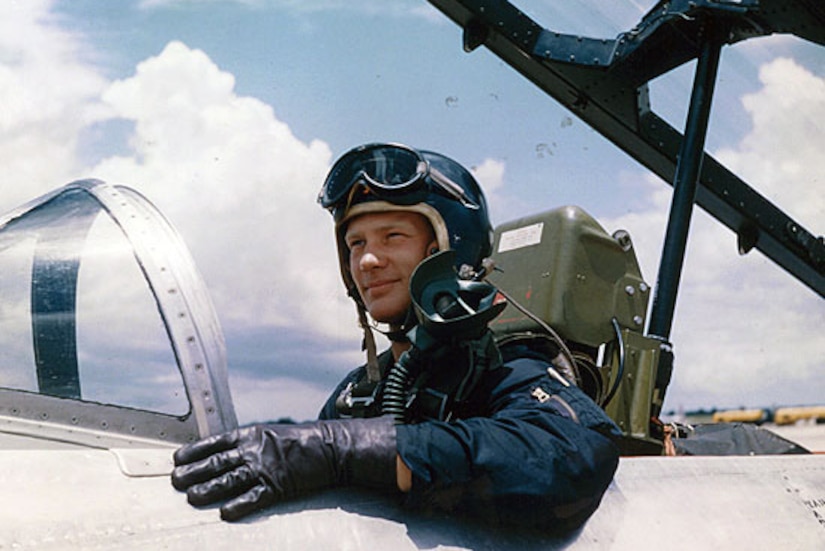
Buzz Aldrin’s service in the military also demonstrated his attribute of ambition (Who 1). After graduating high school early, Aldrin decided to follow in his father’s footsteps by joining the Air Force (1). Instead of accepting a full scholarship from MIT, he enrolled at the United States Military Academy at West Point (1). Because of his ambitious work ethic, he finished top of the class his first year and third in his graduating class (Buzz 1). In 1951, he graduated from West Point with a Bachelor of Science in mechanical engineering (1). That same year, he officially joined the Air Force (1). He finished as one of the top of his flight class, again proving his ambition (1). While serving in the United States Air Force, he flew F86 Sabre Jets in over 65 different combat missions in Korea, destroyed two MIG-15’s, and was honored with the Distinguished Flying Cross medal (Biography 1). The Air Force Personnel Center’s description of the award:This medal is awarded to any officer or enlisted person of the armed forces of the United States for heroism or extraordinary achievement while participating in aerial flight. Both heroism and achievement must be entirely distinctive, involving operations that are not routine. This award is not awarded for sustained operational activities and flights (Distinguished 1).It was a great honor for Aldrin to be decorated with this award for his service in the Korean War (Buzz 1). Throughout his time in the service, he acquired 3,500 total hours of flying time (National 1). Once he returned home, Aldrin attended MIT. In 1963, he graduated with a Ph.D. in aeronautics and astronautics (Buzz 1). This was another example displaying his ambition. Even after returning from the military, he went back to school to continue his education.

Aldrin also exhibited ambition throughout his astronaut career (Aldrin 1). This is what he is most well-known for (1). In 1963, he was chosen by NASA to be in the third group of men to attempt pioneer space flight (1). A few things Aldrin contributed to space flight were docking techniques, rendezvous techniques, and underwater training techniques (1). These techniques are still utilized today (1). Another example of his ambition was executing the first ever successful spacewalk (1). While doing this, he also set a new extravehicular activity (EVA) time record of over five hours (1). He accomplished this on the Gemini 12 orbital mission in 1966 (1). But he was most well known for being one of the first people to ever walk on the moon, along with Neil Armstrong (1). This venture yet again demonstrated Aldrin’s ambition (Buzz 1). Aldrin was the lunar module pilot while Armstrong was the mission commander (1). They made the Apollo 11 moon landing mission on July 20, 1969 (Aldrin 1). They spent about twenty hours on the surface of the moon and collected moon rocks to take back to Earth (1). Throughout his entire astronaut career, he spent almost 300 hours in space (National 1). Once they crew had safely returned back to Earth, president at the time, Richard Nixon, awarded Aldrin with the Presidential Medal of Freedom (1). Of the fifty awards he was presented with, this one was the most honorable (1). A few other honors he received included an asteroid and moon crater named after him, the 2011 Congressional Gold Medal, and a star on the Hollywood Walk of Fame (Buzz 1). Another testament to his ambition was that he returned to the military full-time after leaving NASA in 1971 (National 1). He continued to be ambitious in space exploration education for the rest of his life by writing books, founding a non-profit organization, and giving lectures (Buzz 1).
Buzz Aldrin displayed the attribute of ambition during his early life, military service, and astronaut career. Even after his astronaut career, he continued working to inspire and educate
others about space exploration. No matter what stage of life Aldrin was in, he carried his ambitious work ethic throughout.
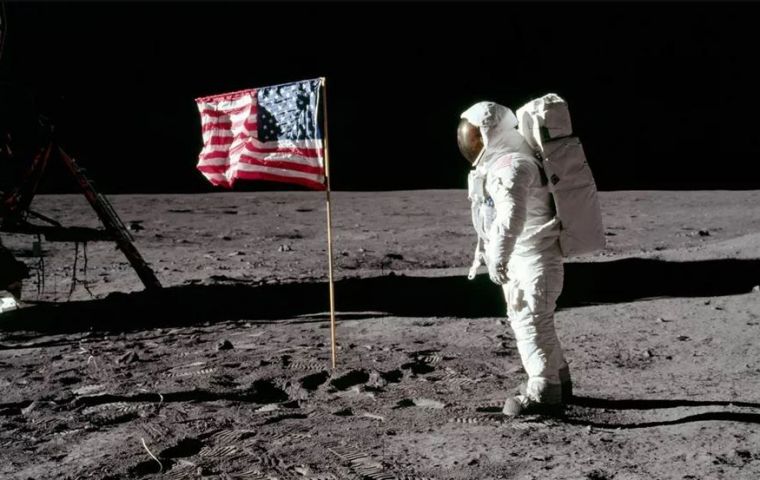
One theory states that the moon landing was fake because the American flag appeared to be waving in the wind in the photographs (Little 1). This raised suspicion among many people because there is no wind on the moon (1). The reason behind this was explained by Rick Fienberg (1). He was the American Astronomical Society’s press officer, who earned a PhD in astronomy (1). Fienberg clarified that the flag was “blowing” was because a horizontal rod was placed in the top of the flag to create this appearance (1). NASA did this so that the flag would not hang slack how it does when there is no wind (1). That would not have looked very good in the photographs (1). The flag still looked to be “rippled” because Buzz Aldrin and Neil Armstrong were not able to fully extend the horizontal rod (1). This was the reason there appeared to be wind on the moon (1).
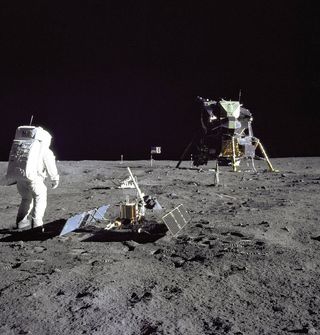
Another theory was that because the stars cannot be seen in the photographs, the moon landing was fake (Little 1). People claimed that if the pictures had really been taken in space, stars should be visible (1). This theory had one of the simplest explanations (1). Fienberg stated, “All of the exposures of the astronauts on the moon are daylight exposures. The surface was brightly illuminated and the astronauts are wearing bright white space suits that are highly reflective” (1). The short exposure on the astronauts’ cameras could not capture the moon, astronauts, and stars (1). In order for the stars to be visible in the photographs, the cameras would need to have a much longer exposure (1). The theory that the landing was fake because the stars cannot be seen in the photos was easily disprovable (1).
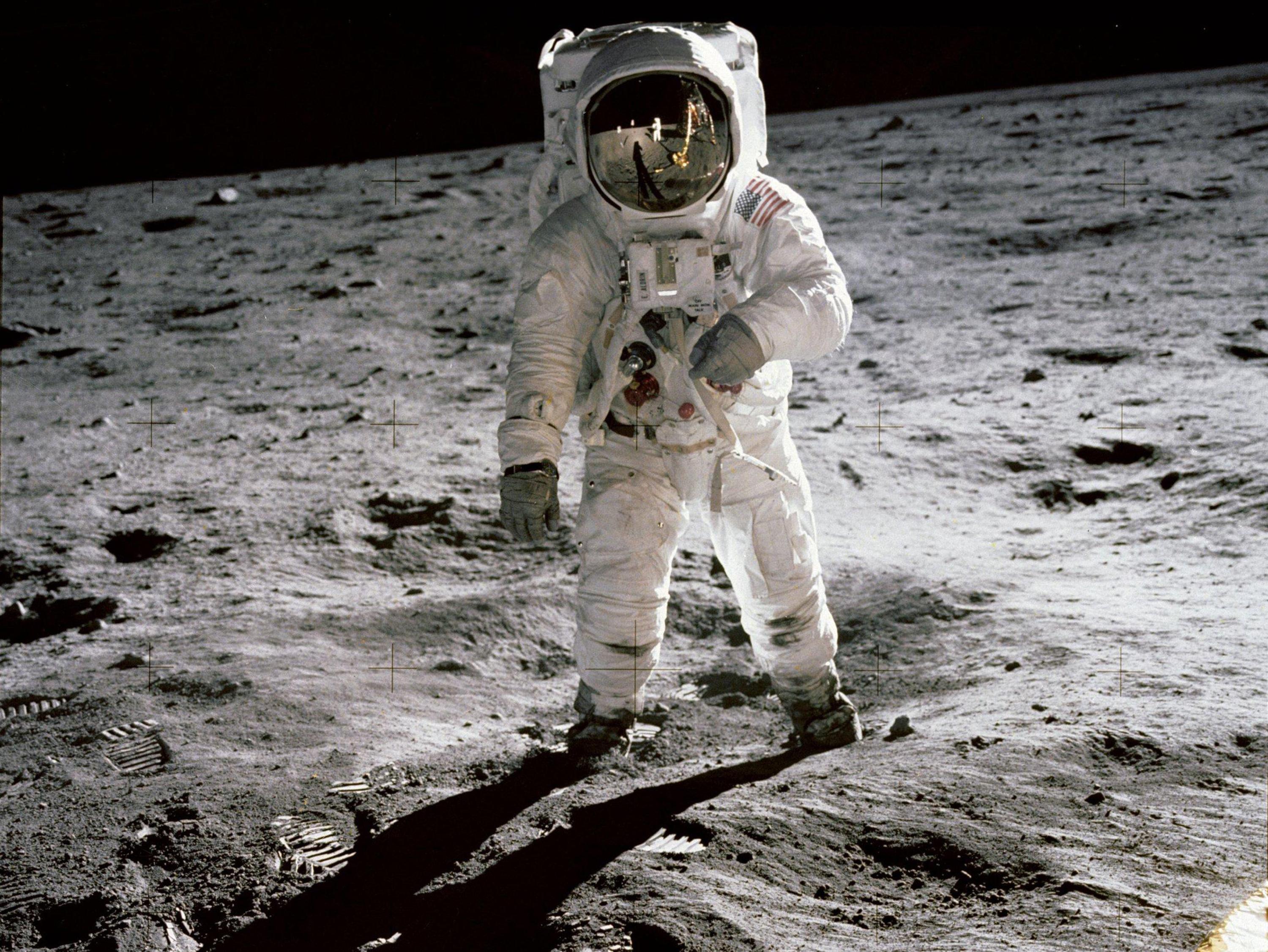
A third theory claimed that the moon landing was fake since the shadows in the pictures are not correct (Little 1). In the pictures, people were able to make out some items even though
they were in a shadow (1). They said that if the sole light source was the sun, these objects should be in complete darkness (1). They believed this proved there were extra Hollywood lights used to take these photos (1). The explanation for this was while the sun is the central light source in space, there are other sources also (1). Fienberg explained, “the sunlight is being scattered or reflected off the ground every which way, and some of it—a small fraction but enough to be able to see—scatters into the shadows” (1). Although this was a smaller source of light, it did contribute to the lighting in the pictures (1). This theory was also fairly simple to debunk.
The theories about the flag, stars, and shadows were easily disproved by Rick Fienberg (Little 1). The majority of people do not believe that the moon landing was fake. Out of twenty people surveyed at Bay Area Christian School, only one person thought the moon landing was fake. Although this is a well-known theory, most people do not believe the landing was fake.
Works Cited
S “Aldrin, Buzz.” National Aviation Hall of Fame, https://www.nationalaviation.org/our-enshrinees/aldrin-buzz/.S “Biography – A Life of Service and Accomplishment.” Buzz Aldrin Astronaut Apollo 11 Gemini 12, https://buzzaldrin.com/biography/.
S “Buzz Aldrin.” Biography.com, A&E Networks Television, 24 July 2019, https://www.biography.com/astronaut/buzz-aldrin. S “Buzz Aldrin Full Biography.” ShareSpace Education, https://sharespace.org/buzz-aldrin-full-biography/.
S “Distinguished Flying Cross.” Air Force's Personnel Center, 4 Aug. 2010, https://www.afpc.af.mil/About/Fact-Sheets/Display/Article/421931/distinguished-flying-cross/.
S Jennings, Rebecca. “Who's Making Money off Moon Landing Conspiracy Theories?” Vox, Vox, 24 June 2019, https://www.vox.com/the-goods/2019/6/24/18692080/moon-landing-50th-anniversary-steph-curry-conspiracy-theory-hoax.
S Little, Becky. “The Wildest Moon Landing Conspiracy Theories, Debunked.” History.com, A&E Television Networks, 10 June 2019, https://www.history.com/news/moon-landing-fake-conspiracy-theories.
S “Who Is Buzz Aldrin? Everything You Need to Know.” Childhood, Life Achievements & Timeline, https://www.thefamouspeople.com/profiles/buzz-aldrin-3394.php.

No comments:
Post a Comment